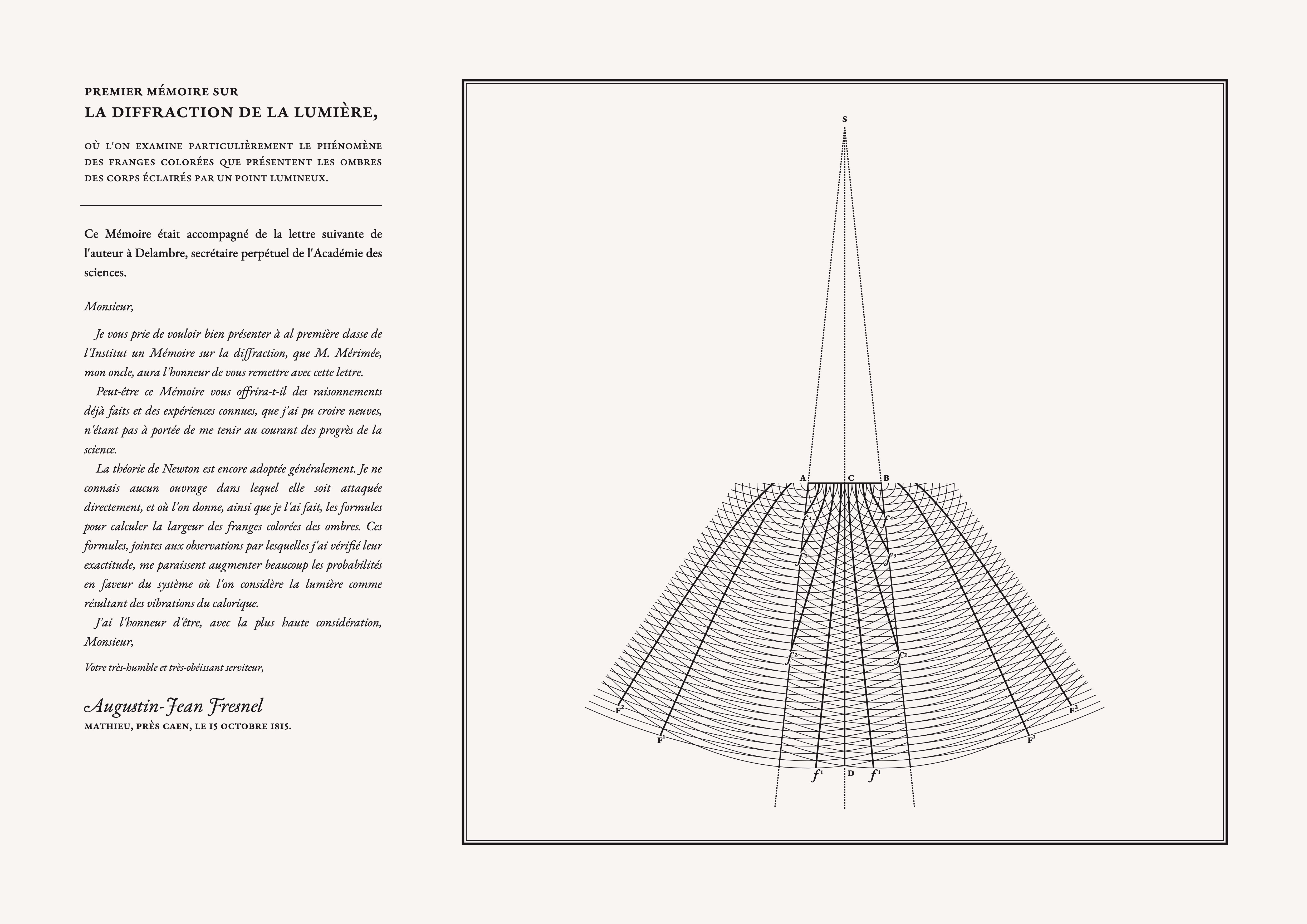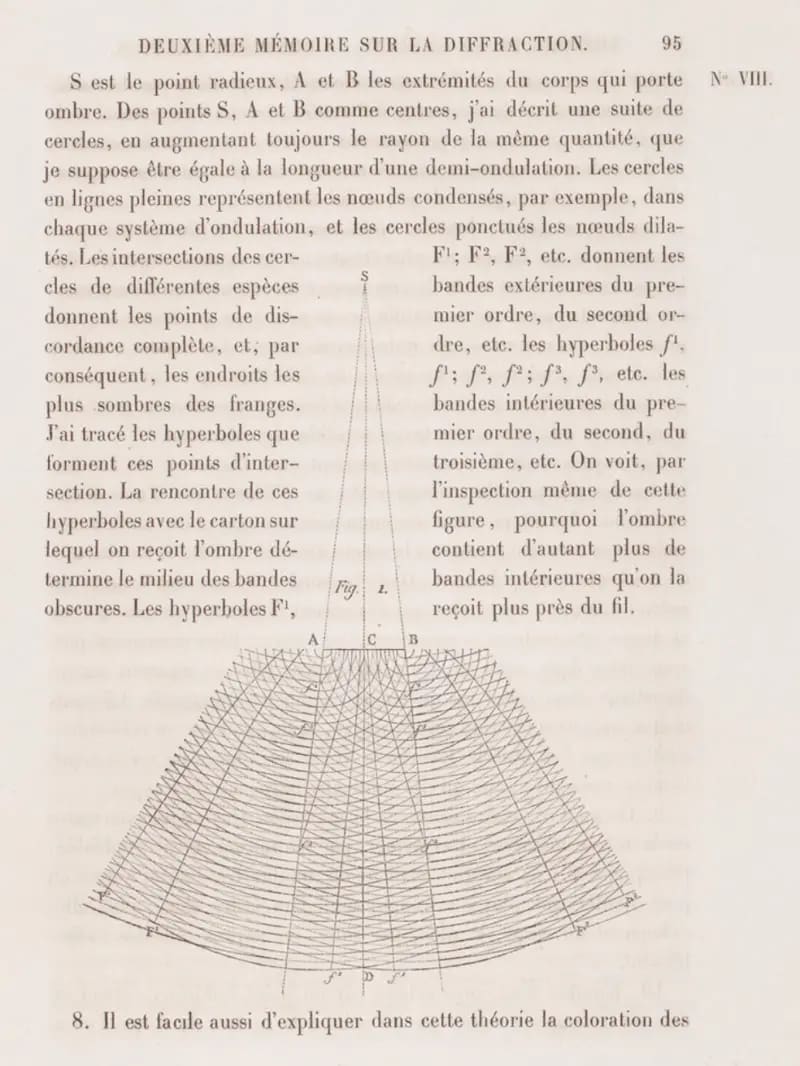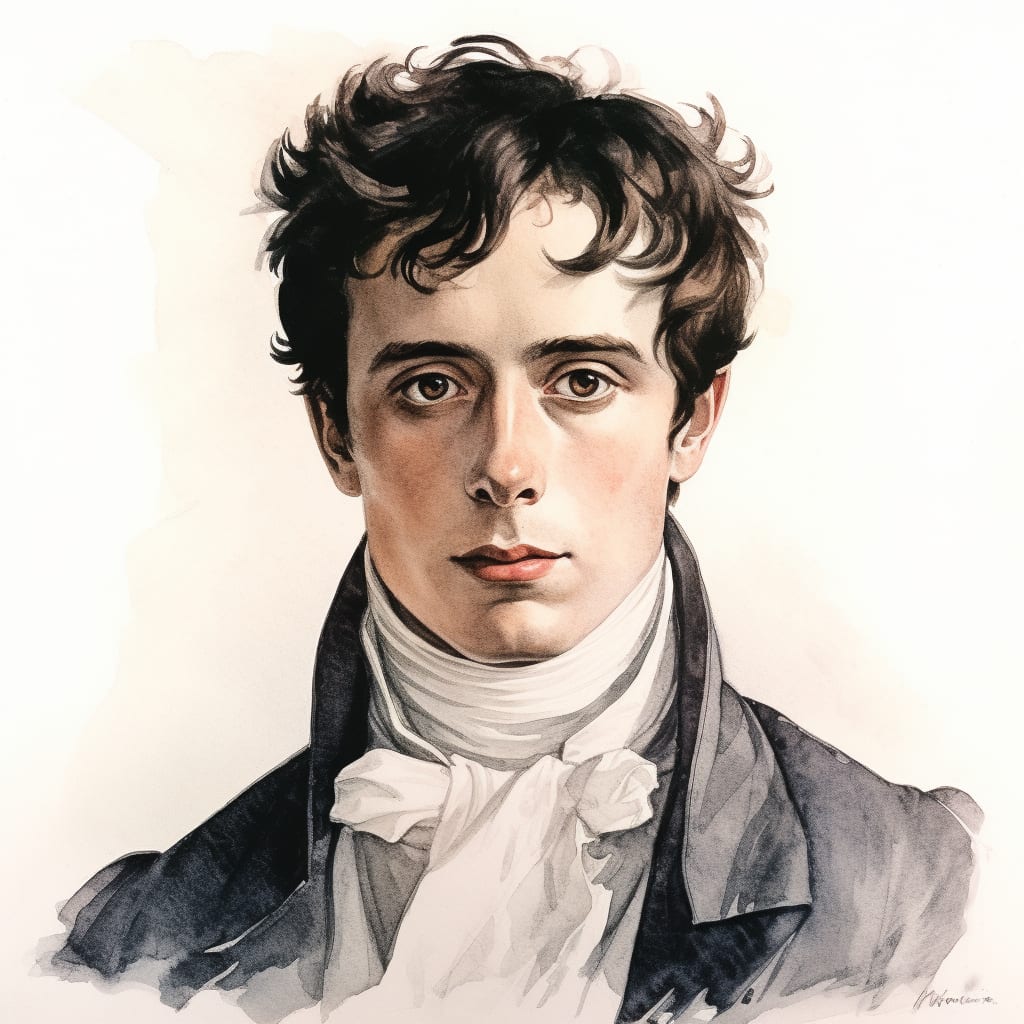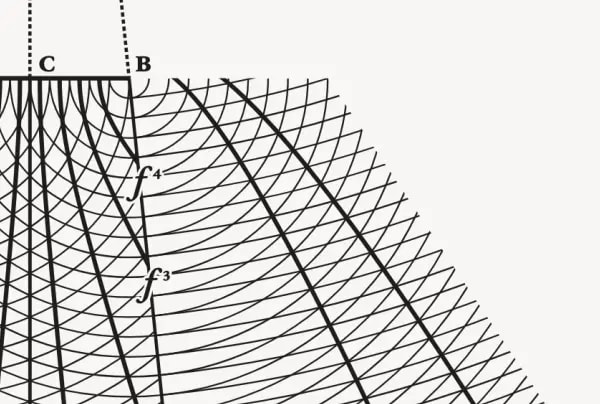La diffraction de la lumière
Augustin-Jean Fresnel, the brilliant French physicist and engineer, made invaluable contributions to the understanding of light interference, forever changing the course of optics and paving the way for modern scientific advancements. His revolutionary insights not only revolutionized the way we perceive light but also showcased the power of persistence and intellectual audacity.

Reproduction of a drawing executed by Fresnel to explain the interference of light coming from two nearby point apertures.
Translation
Title: First memoir on the diffraction of light, where we particularly examine the phenomenon of colored fringes that appear in the shadows of bodies illuminated by a point of light.
Body: This Memoir was accompanied by the following letter from the author to Delambre, perpetual secretary of the Academy of Sciences.
I kindly request you to present to the first class of the Institute a Memoir on diffraction, which Mr. Mérimée, my uncle, will have the honor to deliver to you along with this letter. Perhaps this Memoir will offer you reasoning that has already been made and known experiments, which I may have mistakenly believed to be new, as I am not in a position to keep up with the progress of science. Newton's theory is still generally accepted. I am not aware of any work in which it is directly attacked and where, as I have done, formulas are provided to calculate the width of the colored fringes of shadows. These formulas, combined with the observations through which I have verified their accuracy, seem to me to greatly increase the probabilities in favor of the system in which light is considered as resulting from the vibrations of caloric. I have the honor to be, with the utmost respect, Sir, Your very humble and obedient servant, Augustin-Jean Fresnel.
The phenomenon of diffraction
One of Fresnel's most significant contributions came in the realm of interference. In the early 19th century, the wave theory of light proposed by Thomas Young was gaining traction, but it faced formidable opposition from adherents of the rival particle theory.The hyperbolas mentioned by Fresnel are the hyperbolic antinodal lines in wave interference. The antinodes, which are the positions where constructive interference of two waves occurs, are located along hyperbolic lines known as antinodal lines.
Determined to shed light on this controversy, Fresnel devised a groundbreaking experiment to settle the debate once and for all. As Fresnel said in his memoir, he created the drawing to clearly explain the way he conceived the crossing of waves in the phenomenon of diffraction. Fresnel had drawn the hyperbolas formed by the intersection points and he noted that the intersection of these hyperbolas with the cardboard on which the shadow is received determines the center of the dark bands.

This illustration is featured in the Deuxième mémoire sure la diffraction de la lumière, within the Oeuvres complètes d'Augustin Fresnel, published in 1866 by Henri de Senarmont, Emile Verdet, and Léonor Fresnel.
A similar illustration also appears in the previous memoir Premier mémoire sur la diffraction de la lumière, dated 15 October 1815.
Augustin-Jean Fresnel
1788 – 1827
Born on May 10, 1788, in Broglie, Normandy, Fresnel embarked on a journey that would leave an indelible mark on the scientific community. His passion for optics flourished as he tinkered with lenses and prisms during his early years. However, his path was not without obstacles, as he faced resistance from established scientists who held onto outdated theories.
In 1815, Fresnel submitted his work on the diffraction of light to the prestigious French Academy of Sciences. However, his revolutionary ideas were met with skepticism and ridicule. Established scientists, including the prominent Simeon Denis Poisson, scoffed at Fresnel's audacious claims. Poisson, known for his brilliance, devised an ingenious experiment to prove Fresnel wrong. He argued that according to the particle theory of light, no interference pattern should appear behind an opaque disk. With meticulous precision, Fresnel performed the experiment himself and, to the astonishment of the scientific community, discovered that Poisson's experiment confirmed his wave theory.
Fresnel's achievements reverberated throughout the scientific world, inspiring a generation of physicists and astronomers. His insights have been instrumental in numerous technological advancements, from the development of lenses and microscopes to the design of optical instruments used in telescopes and cameras. His legacy continues to shape our understanding of light and its behavior, enriching our lives and enabling extraordinary discoveries.


